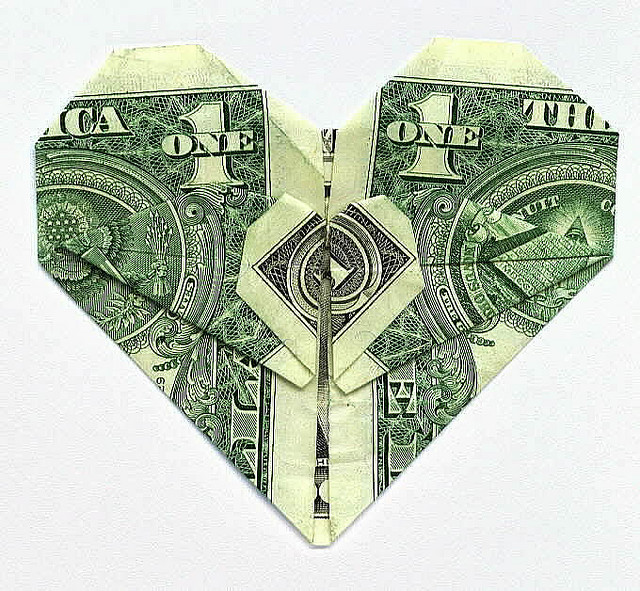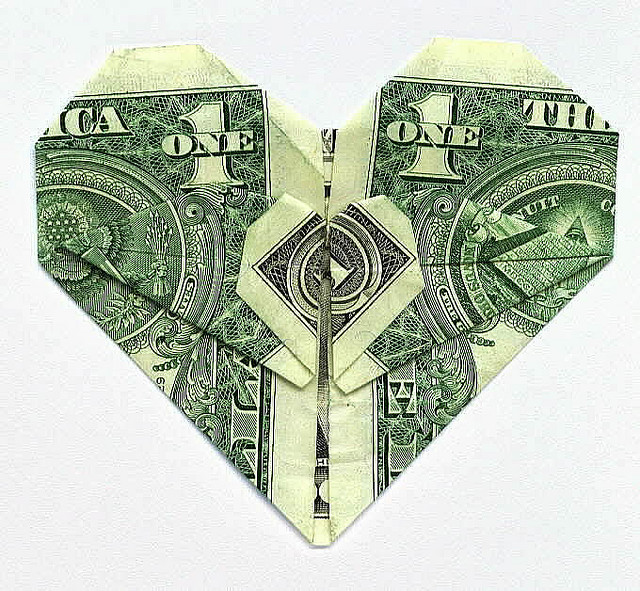
 {image credit: cpalmer on flickr}
{image credit: cpalmer on flickr}
by Tara Gentile of Scoutie Girl + Tara Gentile
We’re going to talk about something uncomfortable: money.
More than just our daily dealings with money, we’re going to talk about how you price what you sell.
I’m going to assume for a moment that you’re a woman (and, if you’re a dude, just keep reading because this all likely applies to you) and that, as a woman, you feel a deep, unapologetic connection between what you offer and who you are. As nurturers, mothers, sparks of the divine feminine, we are programmed to think of what we birth as a part of us.
Yup, I said it – your business, products, or service is your baby.
You gave birth to it and now someone has asked you to put a price tag on it.
And perhaps more than anything else before in your life, you just don’t want to. But without a product or service with a price tag, you don’t have a business – you have a time waster (AKA hobby).
There are numerous ways to determine a price for what you sell. You can generate a wholesale price by adding the cost of labor to the cost of materials and doubling it. You can determine what you need to make per hour to pay the rent and buy ramen noodles. You can check out what others are charging and price yourself well below.
Regardless your method, the number you come up with likely still doesn’t “feel” very good. You probably still think it’s too high – “you” couldn’t possibly be “worth” that.
So you abandon the formula and pick a price that represents what someone “reasonable” would pay.
Nota bene: the quotations mean I’m being a just a bit sarcastic.
Underselling – yourself, your customers, and your colleagues – is a big problem. It’s just wrong, philosophically & financially. It will ruin you, anger your customers, and frustrate your colleagues.
So how can you get your head around charging a higher price for what you do?
Be kind to yourself.
Underselling yourself means that growing & maintaining your business will be as hard as it possibly could be. Forget market factors, customer issues, and supply problems, underselling yourself makes it nearly impossible to carry on with a business over the long haul. All the other pressures of running a business are magnified.
- Relieve your anxiety. In both your personal life & business, your anxiety levels go way up when you’re underselling yourself. You end up feeling like everyone is out to get you – but you just don’t know why.
- Create an ideal work environment. When you undersell yourself, you have to produce more than is possible in working a reasonable period of time. This is often confused with “growing” a business – marketing, communication, customer service – but you need to charge enough to cover your time for those parts of your business as well.
- Build something sustainable. Your business feels like a race that never ends. You’re not prepared for expenses as they come up. You have no cushion to purchase the coaching, supplies, or support you need to move forward. Pricing appropriately means you’re ready for what comes your way.
Ultimately, underselling yourself is a sure way to see your business collapse. That’s unkind to you as a business owner and, when we’re talking ethics, we have to be aware of how we treat ourselves. Mindful earning is a way to be kind to yourself.
Be kind to your customers.
We assume our customers want low prices. But for as many people as shop around for the lowest prices, there are at least as many who shop around for a great fit, a perfect package, or a personal connection.
- Do the best work for the best price. It’s okay to add value into your products or services – versatility, for instance – but that value is worth something. Having a reasonable price means that your customer gets your best work and not something much less.
- Maintain a great relationship. When you price responsibly, your customers end up being people you look forward to connecting with. You don’t resent them or blame them for the failures of your business. Instead, you celebrate them for making your business a success!
- Deliver what was promised. Just as underselling means you’ll be overworked, customers often get less than was promised when you price too low. You run out of time, you fail to meet deadlines, you can’t produce to your high standards. The customer deserves what you promise so price accordingly.
Your customers deserve better than bargain basement. And they’re willing to pay you for what you do best. You just have to ask for it.
Be kind to your colleagues.
Some of the greatest losers when it comes to underselling are your colleagues. They work hard to build customer bases, reputations, and fantastic products. But when you decide to compete on price, they may feel forced to alter their business to keep up with the market.
- Maintain a market that competes on need rather than price. There will always be different needs (beginner to expert, pretty to edgy, blue to green) and a huge variety of businesses can operate side by side without ever needing to compete with each other.
- Support others bottom lines while creating your own. Seek out similar businesses to yours that offer similar services in a different style. What do they charge? Are their customers happy? Consider how your pricing stacks up to theirs.
It’s true that paying special attention to underselling will mean that you will raise your rates to levels that are uncomfortable to you.
It’s also true that, until you become more comfortable with your life as an entrepreneur and money in general, you will be uncomfortable with your rates no matter how low they are. Selling what you love is hard.
Discomfort is not a good pricing strategy.
Kindness is.
Be kind to yourself, your growing business, your customers, and your colleagues by learning to respect your product & it’s price.
Tara Gentile is a coach & teacher who empowers passionate people produce & profit. Discover her unique philosophy on creative entrepreneurship at taragentile.com.

